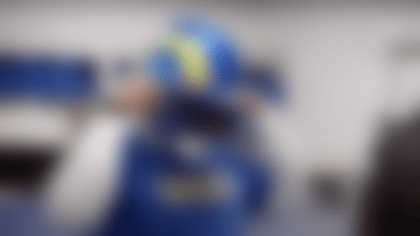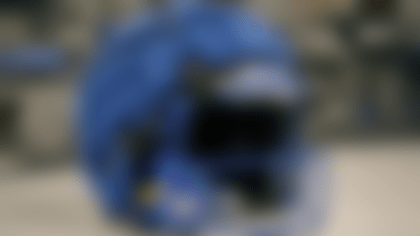Summary
Private company VICIS and its academic partner, the University of Washington, are leading work on a new football helmet that they hope could, in the words of one of its key researchers, "make play in sport safer." Designed with a soft shell that acts like a car bumper and vertical struts inside the helmet that bend and buckle, this product seeks to mitigate the forces that lead to concussions and brain injuries. The innovative project is one of three final winners in Head Health Challenge II, which is part of the Head Health Initiative, a four-year, $60 million collaboration between the NFL, GE and Under Armour to accelerate diagnosis and improve treatment for traumatic brain injury. The project has already received two grants totaling $750,000 from GE, Under Armour and the NFL for continued research and development.
A Better Helmet
"Current helmets were designed against skull fracture, they were modeled primarily after motorcycle helmets," says Dave Marver who is CEO and Co-Founder of VICIS.
VICIS started the project as a collaboration with the University of Washington to develop what they called the Zero1 Helmet.
Marver says current versions of football helmets "are not optimized to prevent or mitigate traumatic brain injury or concussion." He says: "They don't slow acceleration, which is the force that's thought to cause concussion."
The Zero1 helmet has passed the National Operating Committee on Standards for Athletic Equipment tests, which means it can be used on NFL fields.
"A Public Health Problem"
In this profile published by Bloomberg, Marver says the next innovation in football technology is within reach:
Marver, 47, played football growing up in Cincinnati but gave it up for golf because he thought he was too small. A fan of both his hometown Bengals and Seattle's Seahawks, he once sold pacemakers and other devices for Medtronic and more recently was CEO of a maker of defibrillators. "I grew up in medical tech, which is why the issue with helmets doesn't scare me," he says. "We are a medical technology company addressing a public health problem."
An Innovative Design
Forbes recently described the thinking behind the design of the Zero1 this way:
"The Zero1 helmet is designed to address not just linear forces acting upon football players' heads but also angular and rotational acceleration. The idea is pretty simple and rooted in physics. If force is the product of mass and acceleration and you can't change the mass of a football player (football players can deliver up to one ton of force), a helmet must address acceleration if it's going to impact force.
"Unlike traditional helmets, the Zero1 has a soft outer shell that deforms on impact and a column-like inner structure intended to absorb impact and disperse its force omnidirectionally. There is also an additional rigid layer inside the helmet."
Seeking to Prove That It Works
Testing of the Zero1's performance in impact is underway.
"When we go out and claim that this helmet is better, then we will have scientific, rigorous data to back it up," says Per Reinhall, Professor and Chair of the Department of Mechanical Engineering at The University of Washington.
"We don't want this helmet to provide a small tweak in the current technology," he says. "We want this to be a dramatic improvement."












